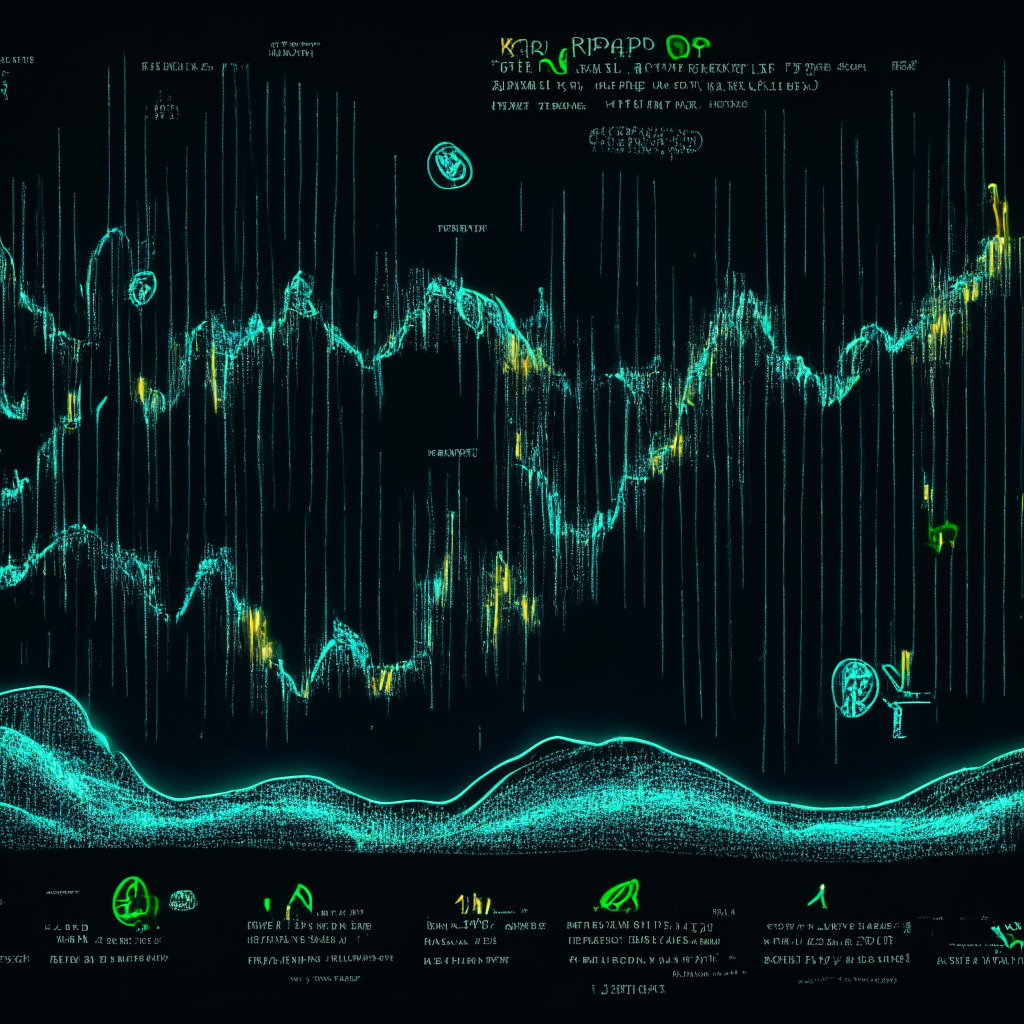In spite of a temporary dip on Tuesday that saw Bitcoin (BTC), the globally formidable cryptocurrency, tagging fresh one-month lows around $29,500, proponents assert potential for an upward shift, driven by the crypto’s historically established relations with the US stock market and dollar.
BTC’s fleeting descent, about 1.5% to $29,700, followed promising developments from Wall Street giants, including Spot Bitcoin Exchange-Traded Fund (ETF) filings and crypto-friendly rulings by a US judge on XRP. The recent downturn has seen BTC slipping approximately 2.5% beneath its 21-Day Moving Average, escalating concerns of further slippage.
Questions have arisen as to whether BTC can weather the downward pressure and maintain its key support margins from mid-$29,000 up to the early $28,000s. However, long-term macro factors are poised to aid Bitcoin. In particular, if Bitcoin’s historically potent correlations to the US stock market and the US dollar reappear, an upsurge in BTC’s market value might be on the horizon.
In the recent few years, Bitcoin has largely moved in synchrony with the US stock market, reflecting investors’ broader risk sentiments. The advent of ’20/’21 witnessed BTC and the stock market concurrently benefiting from low interest rates and significant central bank administered QE. However, with inflation-induced interest rate hikes collapsing this harmony in 2022, the coming year will be critical in determining the nature of Bitcoin’s relationship with the stock market.
Recent charts created by CoinMetrics.com unveil a marked drop in the correlation since the start of 2023. This decline marks a potential shift in sentiments, with the role of Bitcoin being reimagined from a capital appreciating asset to a safeguard against inflation.
BTC’s hearty March rally against faltering regional US banks and a concomitant US stocks slump accentuates this paradigm shift. The slenderness in the correlation between the daily shifts in Bitcoin and the S&P 500 prices, down to under 0.1 from 0.75 in May 2022, also illustrates this evolution.
Coupled with the S&P 500’s relentless rise, and resolute US economic growth, proponents assert that Bitcoin’s positioning below $30,000 may represent an undervaluing of the cryptocurrency. The anticipated return of the BTC and USD market’s negative correlation, currently languishing near a year’s weakest at above -0.2, further emphasizes this view.
As the DXY plunges to fresh annual lows around 100, investors are snatching at opportunities, cognizant that now might be an opportune time to ‘buy the dip’ while Bitcoin is perhaps undervalued. As the spectre of potential support retests in the mid-$28,000s and the impending 2023 uptrend lies in wait, Bitcoin remains shrouded in an atmosphere of cautious optimism.
The final word of caution, though: Despite a persistent display of resilience, cryptocurrency remains a high-stakes investment. The age-old wisdom of only investing what you’re willing to lose holds true more than ever. Stay vigilant, informed, and adapt to the rapidly evolving market scenarios.
Source: Cryptonews




